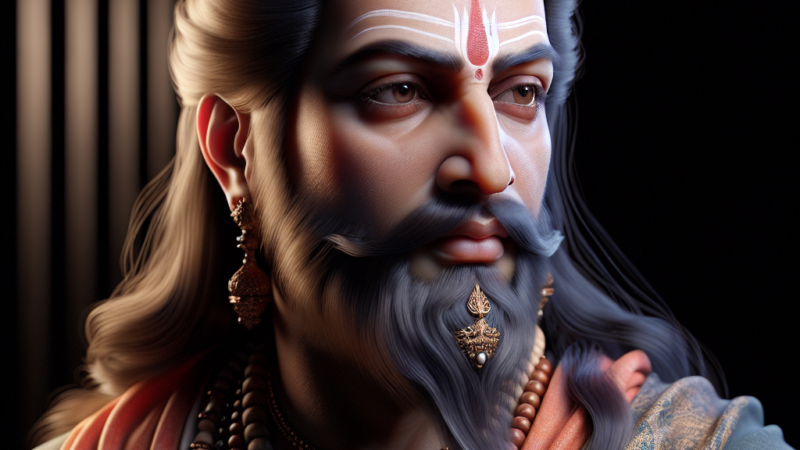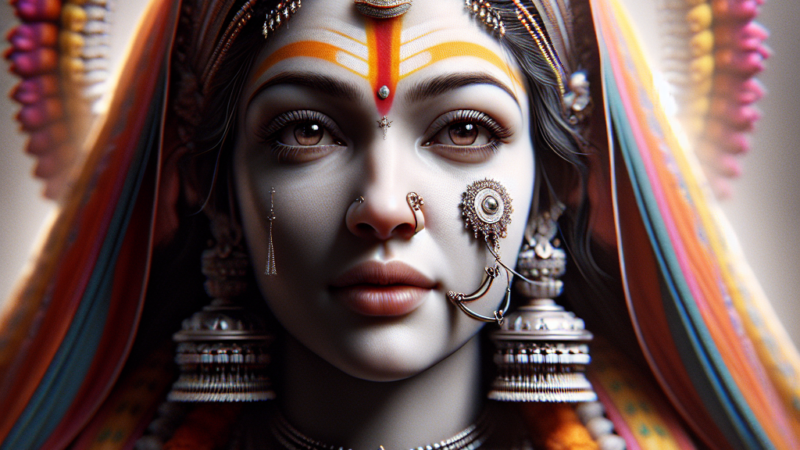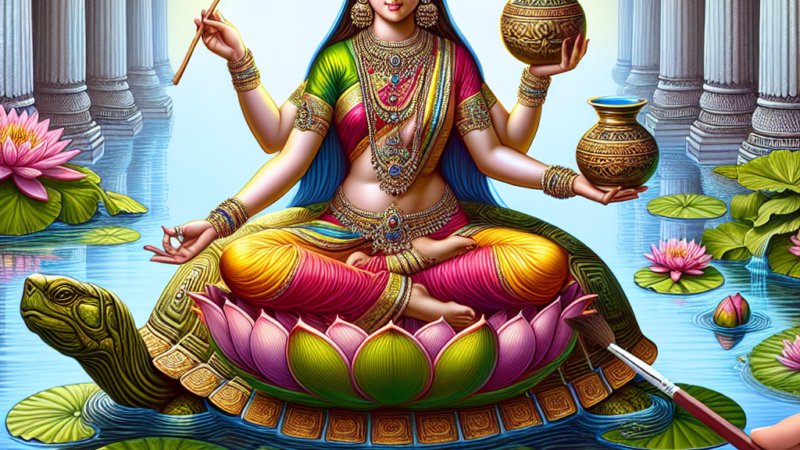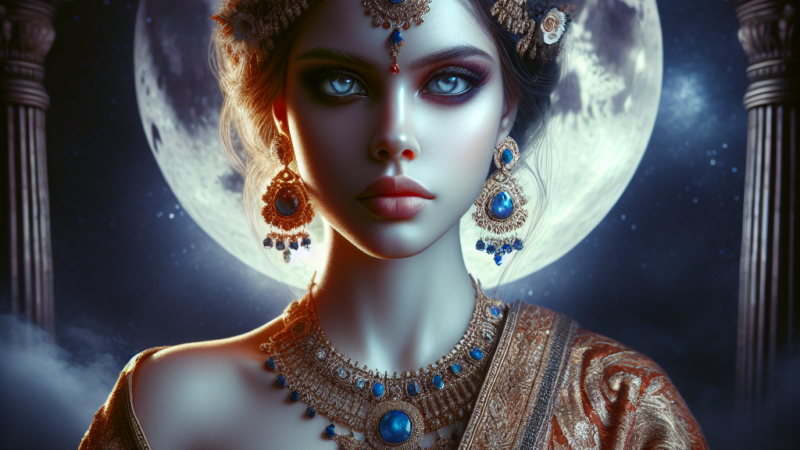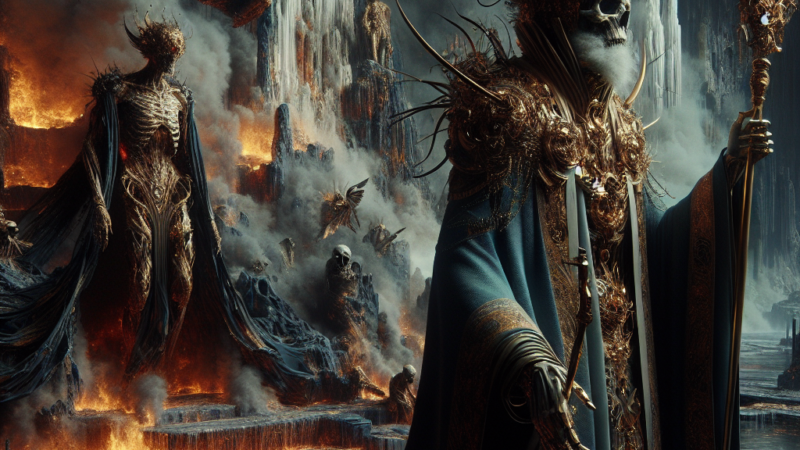Bhairava: The Fearsome Form of Shiva
Introduction

Bhairava, a fearsome and formidable form of the Hindu deity Shiva, is revered across various traditions within Hinduism. Known for his fierce and protective nature, Bhairava embodies the destructive aspect of Shiva, symbolizing the annihilation of evil and ignorance. This deity holds a significant place in Hindu mythology, iconography, and worship practices, reflecting the complex and multifaceted nature of Shiva himself.
In Hinduism, Bhairava is often invoked for protection, the removal of obstacles, and the destruction of negative forces. His role extends beyond mere destruction; he is also seen as a guardian of the eight directions (Ashta Bhairavas) and a protector of devotees. Bhairava’s attributes and stories highlight his importance in maintaining cosmic order and justice.
Etymology and Meaning
Origin of the Name Bhairava
The name “Bhairava” is derived from the Sanskrit root “bhīru,” which means “fearful” or “terrifying.” The suffix “ava” implies a state of being, thus Bhairava translates to “one who is terrifying” or “the fearsome one.” This name aptly captures the deity’s fierce and protective nature.
Variations of the Name
Bhairava is known by various names and forms across different texts and regions. Some of these include Kala Bhairava, Swarna Akarshana Bhairava, and Ashta Bhairava. Each form represents different aspects and attributes of the deity, emphasizing his multifaceted nature.
Symbolic Meaning
The name Bhairava symbolizes the destruction of fear and ignorance. As a form of Shiva, Bhairava represents the ultimate reality that transcends fear, embodying the power to annihilate all that is negative and harmful. This symbolic meaning underscores Bhairava’s role as a protector and guardian.
Mythological Origins and Stories
Major Myths and Stories
One of the most well-known myths associated with Bhairava is the story of his creation by Shiva to destroy the arrogance of Brahma. According to this legend, Brahma became arrogant and claimed superiority over Shiva. In response, Shiva created Bhairava, who decapitated one of Brahma’s five heads, symbolizing the destruction of ego and pride.
Bhairava in Major Hindu Epics
While Bhairava does not play a central role in the major Hindu epics like the Mahabharata and Ramayana, his presence is felt through various references and stories. In the Mahabharata, Bhairava is invoked as a fierce protector and a deity who can remove obstacles and destroy enemies.
Other Significant Tales
Another significant tale involves Bhairava’s role as the guardian of the city of Kashi (Varanasi). It is believed that Bhairava protects the city and its inhabitants, ensuring that those who die in Kashi attain liberation (moksha). This story highlights Bhairava’s role as a benevolent protector despite his fearsome appearance.
Iconography and Symbols
Depiction in Art, Statues, and Temples
Bhairava is typically depicted as a fierce deity with a terrifying appearance. He is often shown with a garland of skulls, holding a trident (trishula), a drum (damaru), and a noose (pasha). His vahana (vehicle) is a dog, symbolizing loyalty and protection.
Common Symbols
The trident represents the three aspects of creation, preservation, and destruction. The drum signifies the cosmic sound of creation, while the noose symbolizes control over negative forces. The garland of skulls represents the cycle of life and death, emphasizing Bhairava’s role in the cosmic order.
Meaning and Significance
Each symbol associated with Bhairava carries deep spiritual significance. Together, they portray Bhairava as a powerful deity who controls the forces of the universe, ensuring balance and justice. His fearsome appearance serves as a reminder of the power of divine protection and the destruction of evil.
Worship and Rituals
Festivals Dedicated to Bhairava
One of the most important festivals dedicated to Bhairava is Bhairava Ashtami, celebrated on the eighth day of the waning moon in the Hindu month of Margashirsha (November-December). Devotees observe fasts, perform special rituals, and offer prayers to seek Bhairava’s blessings and protection.
Common Rituals and Practices
Worship of Bhairava often involves offerings of black sesame seeds, mustard oil, and red flowers. Devotees chant specific mantras, such as the Bhairava Gayatri Mantra, to invoke his presence and seek his protection. Rituals may also include the recitation of sacred texts like the Bhairava Stotra.
Sacred Texts and Mantras
Several sacred texts and mantras are associated with Bhairava worship. The Bhairava Stotra, composed by Adi Shankaracharya, is a popular hymn that praises Bhairava’s attributes and seeks his blessings. The Bhairava Gayatri Mantra is another powerful chant used by devotees to invoke the deity’s protection.
Temples and Sacred Sites
Major Temples in India and Around the World
Some of the most prominent temples dedicated to Bhairava include the Kal Bhairav Temple in Ujjain, Madhya Pradesh, and the Bhairav Nath Temple in Varanasi, Uttar Pradesh. These temples attract thousands of devotees who seek Bhairava’s blessings and protection.
Significance of These Temples
These temples are considered highly sacred and are believed to be powerful centers of spiritual energy. Devotees visit these sites to perform rituals, offer prayers, and seek divine intervention in overcoming obstacles and challenges in their lives.
Annual Pilgrimages and Religious Events
Annual pilgrimages to Bhairava temples, especially during Bhairava Ashtami, are significant religious events. Devotees from various parts of India and the world participate in these pilgrimages, seeking spiritual solace and divine blessings.
Regional Variations and Cultural Impact
Regional Worship Practices
Bhairava is worshipped differently across various regions of India. In South India, he is often associated with the deity Ayyappa and is worshipped in conjunction with other forms of Shiva. In North India, Bhairava is revered as a guardian deity and protector of sacred spaces.
Influence in Regional Folklore and Festivals
Bhairava’s influence extends to regional folklore, festivals, and traditions. In Tamil Nadu, for example, Bhairava is worshipped during the festival of Karthigai Deepam, where devotees light lamps to honor the deity. In Nepal, Bhairava is an important figure in Newar culture and is worshipped during various local festivals.
Cultural Impact in Literature and Arts
Bhairava’s fearsome yet protective nature has inspired various forms of literature, art, and performing arts. He is a popular subject in classical Indian dance forms like Bharatanatyam and Kathak, where his stories and attributes are depicted through intricate dance movements and expressions.
Related Deities and Associations
Connections with Other Deities
Bhairava is closely associated with other deities in Hinduism, particularly Shiva and his consort Parvati. As a form of Shiva, Bhairava embodies the destructive aspect of the deity, while Parvati represents the nurturing and creative aspect. Together, they symbolize the balance of cosmic forces.
Family Relationships
In Hindu mythology, Bhairava is often depicted as a guardian of Parvati and their children, Ganesha and Kartikeya. His protective nature extends to his divine family, emphasizing his role as a fierce yet benevolent guardian.
Role in the Broader Hindu Pantheon
Within the broader Hindu pantheon, Bhairava is seen as a powerful deity who maintains cosmic order and justice. His role as a protector and destroyer of evil aligns with the overarching themes of balance and harmony in Hindu cosmology.
Modern Relevance and Popularity
Contemporary Hindu Practice
In contemporary Hindu practice, Bhairava continues to be revered as a powerful protector and remover of obstacles. Devotees seek his blessings for protection against negative forces, success in endeavors, and spiritual growth. His worship remains an integral part of various Hindu rituals and ceremonies.
Influence in Modern Media and Popular Culture
Bhairava’s fearsome yet protective image has found its way into modern media, literature, and popular culture. He is often depicted in films, television shows, and books that explore themes of divine intervention, protection, and justice. His stories continue to inspire and captivate audiences worldwide.
Ongoing Traditions and Devoted Communities
Several communities and traditions remain particularly devoted to Bhairava. These include specific sects within Shaivism, as well as regional communities that uphold traditional worship practices and rituals dedicated to the deity. Bhairava’s enduring popularity reflects his continued relevance in the spiritual lives of many Hindus.
Conclusion
Bhairava, the fearsome form of Shiva, embodies the complex interplay of destruction and protection within Hinduism. His myths, symbols, and worship practices highlight his role as a powerful guardian and remover of obstacles. Despite his terrifying appearance, Bhairava’s benevolent nature and protective attributes make him a beloved deity among devotees.
As a significant figure in Hindu mythology and worship, Bhairava’s continued importance is evident in the numerous temples, festivals, and rituals dedicated to him. His influence extends beyond religious practices, inspiring literature, art, and popular culture. For followers, Bhairava represents the ultimate protector who destroys evil and ensures cosmic balance.
Frequently Asked Questions (FAQs)
Who is Bhairava?
Bhairava is a fearsome form of the Hindu deity Shiva, known for his protective and destructive attributes. He is revered as a guardian and remover of obstacles.
What is the significance of Bhairava in Hinduism?
Bhairava symbolizes the destruction of evil and ignorance. He is invoked for protection, the removal of obstacles, and the maintenance of cosmic order.
How is Bhairava depicted in art and iconography?
Bhairava is typically depicted with a terrifying appearance, holding a trident, drum, and noose. He is often shown with a garland of skulls and accompanied by a dog.
What are some major festivals dedicated to Bhairava?
Bhairava Ashtami is one of the most important festivals dedicated to Bhairava, celebrated on the eighth day of the waning moon in the Hindu month of Margashirsha.
Where are some major temples dedicated to Bhairava?
Prominent temples dedicated to Bhairava include the Kal Bhairav Temple in Ujjain and the Bhairav Nath Temple in Varanasi. These temples are significant centers of worship and pilgrimage.
References and Further Reading
Shiva Purana
The Shiva Purana contains various stories and hymns dedicated to Shiva and his forms, including Bhairava.
Skanda Purana
The Skanda Purana provides detailed accounts of Bhairava’s myths, attributes, and worship practices.
Bhairava Stotra by Adi Shankaracharya
This hymn praises Bhairava’s attributes and seeks his blessings, offering insights into his significance in Hindu worship.
Books on Hindu Mythology
Books such as “Myths and Legends of India” by William Radice and “Hindu Gods and Goddesses” by Swami Harshananda provide comprehensive information on Bhairava and other deities.
Academic Journals
Articles in academic journals on Hindu studies and religious practices offer scholarly insights into Bhairava’s role and significance in Hinduism.
We strive to present the teachings of Ramana Maharshi and the traditions of Sanatana Dharma with respect and accuracy. Terms like "mythology" are used for ease of understanding and are not meant to diminish the significance of sacred texts.
